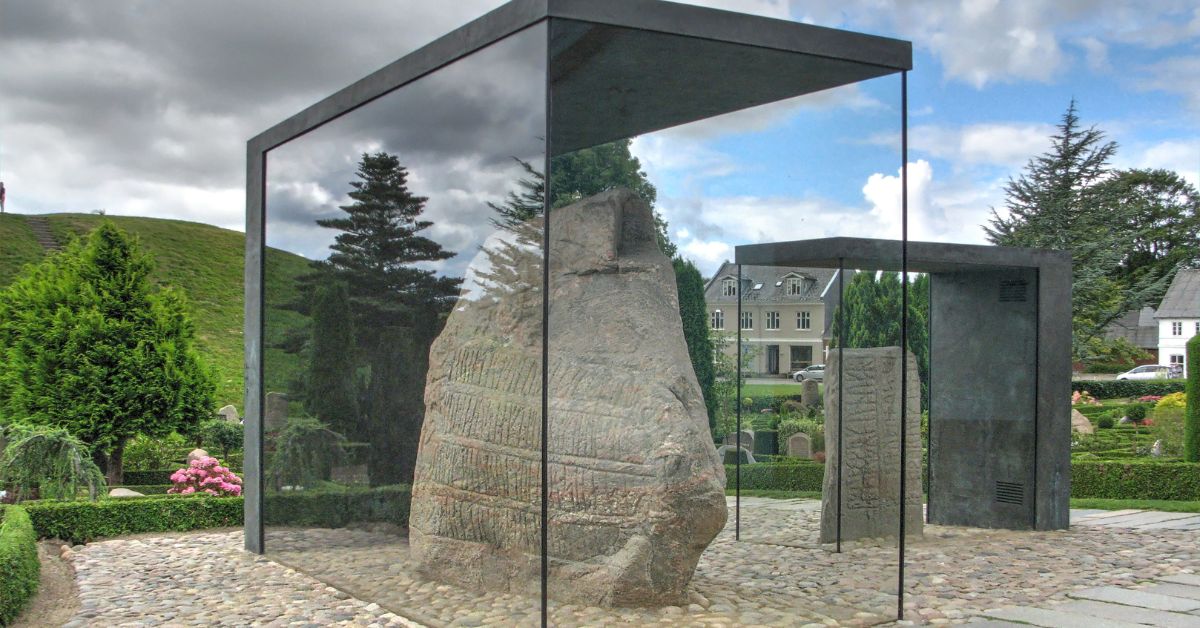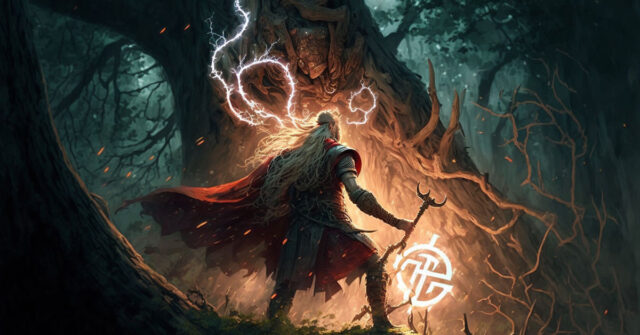The Jelling Stones, erected in the 10th century, are monumental artifacts that symbolize the birth of Denmark.
Often referred to as Denmark’s birth certificate, these stones offer deep insights into the nation’s transition from paganism to Christianity, and the unification under a single king.
This blog post aims to provide a comprehensive exploration of the Jelling Stones, their historical significance, cultural impact, and ongoing legacy.
Introduction
The Jelling Stones stand as a testament to a transformative period in Danish history.
These runestones, erected by King Harald Bluetooth, not only commemorate his parents but also mark significant cultural and religious shifts.
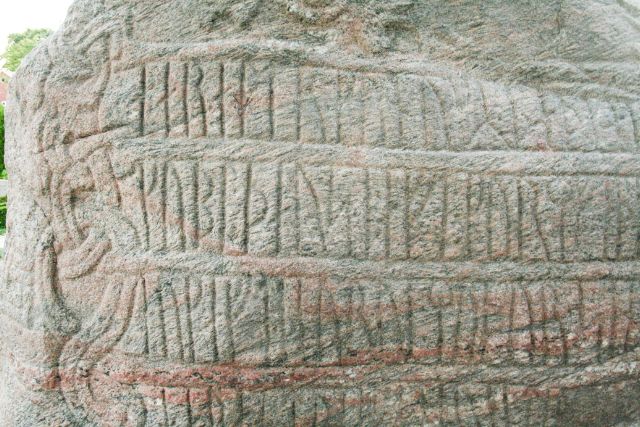

Overview of the Jelling Stones
Located in the town of Jelling, Denmark, the Jelling Stones are a pair of massive runestones erected by King Harald Bluetooth.
These stones commemorate his parents, King Gorm the Old and Queen Thyra, and his own achievements.
The inscriptions on these stones are among the earliest records mentioning the name “Denmark.”
Importance in Danish History
The Jelling Stones are often considered Denmark’s birth certificate because they symbolize the unification of the country under one ruler and its conversion to Christianity.
These stones provide the earliest written reference to Denmark, marking them as critical artifacts in understanding the nation’s history.
Purpose of This Blog Post
This blog post aims to delve into the historical, cultural, and artistic significance of the Jelling Stones.
By exploring their background, inscriptions, and legacy, we hope to provide a thorough understanding of why these stones are so pivotal in Danish history.
Historical Background
The Jelling Stones are not just historical markers but are symbols of a significant period of change in Denmark.
The Founding of Jelling
The town of Jelling, where the stones are located, was a central site for the Danish monarchy. It served as a royal seat and a significant cultural and political center during the Viking Age.
King Gorm the Old and Queen Thyra
King Gorm the Old, who reigned from 936 to his death in 958, is often credited with founding the Danish monarchy.
He erected the smaller Jelling Stone in memory of his wife, Queen Thyra, who was highly revered. The inscription on this stone honors Thyra as the “ornament of Denmark.”
King Harald Bluetooth and His Achievements
King Harald Bluetooth, Gorm’s son, is famous for unifying Denmark and Norway and converting the Danes to Christianity.
The larger Jelling Stone he erected commemorates his parents and celebrates his own accomplishments.
The inscription declares Harald’s success in uniting the kingdoms and making the Danes Christian.


Descriptions of the Jelling Stones
The Jelling Stones are not just pieces of carved rock; they are rich with history and symbolism.
The Smaller Jelling Stone
Erected by King Gorm, the smaller stone honors Queen Thyra. Its inscription, though brief, is significant as it reflects the esteem in which Thyra was held.
It reads, “King Gorm made this monument in memory of Thyra, his wife, Denmark’s adornment.”
The Larger Jelling Stone
The larger stone, erected by King Harald Bluetooth, is more elaborate. It features inscriptions on three sides and includes both runic text and intricate carvings.
One side depicts Christ, making it one of the earliest representations of Jesus in Scandinavia.
Inscriptions and Their Meanings
The inscriptions on the larger stone are particularly notable.
They proclaim Harald’s achievements: “King Harald ordered these monuments made in memory of Gorm, his father, and Thyra, his mother; that Harald who won for himself all of Denmark and Norway and made the Danes Christian.”
This inscription highlights Harald’s role in unifying Denmark and converting its people to Christianity.
Cultural and Religious Significance
The Jelling Stones mark a critical point in Denmark’s cultural and religious history, symbolizing the transition from paganism to Christianity.
The Transition from Paganism to Christianity
The Jelling Stones are significant for their role in Denmark’s conversion to Christianity.
King Harald Bluetooth, after his baptism, ordered the construction of these stones to commemorate his parents and his achievements in unifying Denmark and spreading Christianity.
This marked a significant shift from the pagan traditions that had dominated the region.
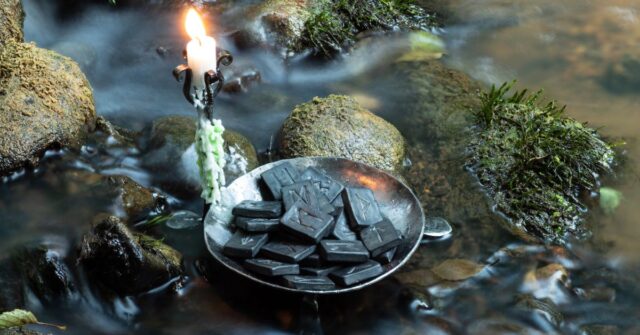

The Symbolism of the Stones
The stones are rich with symbolism. The depiction of Christ on the larger stone represents the new Christian faith, while the runic inscriptions reflect the old Norse culture.
This combination of symbols illustrates the blending of old and new beliefs during this transformative period.
Impact on Viking Society
The conversion to Christianity had profound effects on Viking society. It influenced everything from burial practices to artistic expression.
The Jelling Stones, with their Christian iconography and runic inscriptions, are a perfect example of this cultural evolution.
Artistic and Linguistic Insights
The Jelling Stones are also valuable for their artistic and linguistic contributions, offering a glimpse into Viking art and the Old Norse language.
Viking Artistry on the Stones
The stones feature intricate carvings that are prime examples of Viking artistry.
The designs include interlacing animal figures and geometric patterns, which are characteristic of the Viking art styles of the period.
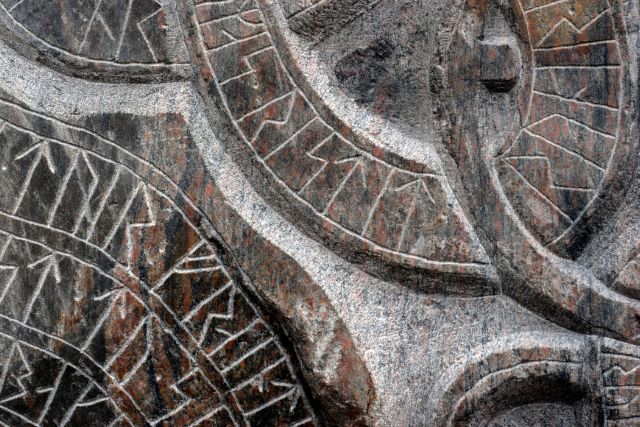

Runic Inscriptions and Old Norse Language
The runic inscriptions on the Jelling Stones provide valuable insights into the Old Norse language.
They offer a glimpse into the language, its structure, and its use in commemorative texts.
These inscriptions are among the most detailed from the Viking Age, making them crucial for linguistic studies.
Comparison with Other Viking Artifacts
Compared to other Viking artifacts, the Jelling Stones are unique in their combination of Christian and pagan elements.
While many Viking artifacts are purely pagan, the Jelling Stones reflect the transitional period when Christianity was beginning to take hold in Scandinavia.
Archaeological Discoveries and Research
Ongoing archaeological research continues to uncover new information about the Jelling Stones and their historical context.
Excavations at Jelling
Archaeological excavations at Jelling have revealed much about the site’s history.
Discoveries include the remains of a large wooden church and several burial mounds, providing context for the Jelling Stones and their significance.
Findings from the Burial Mounds
The burial mounds at Jelling, originally thought to contain the remains of Gorm and Thyra, were found to be empty.
This has led to theories about the reburial of their remains in a Christian context, reflecting the religious changes taking place at the time.
Ongoing Research and Discoveries
Research on the Jelling Stones and their surroundings is ongoing. New findings continue to shed light on Viking society, their burial practices, and the transition to Christianity.
Each discovery adds to our understanding of this pivotal period in Danish history.
Preservation and Public Interest
The Jelling Stones are preserved as a UNESCO World Heritage site and continue to attract interest from scholars and tourists alike.
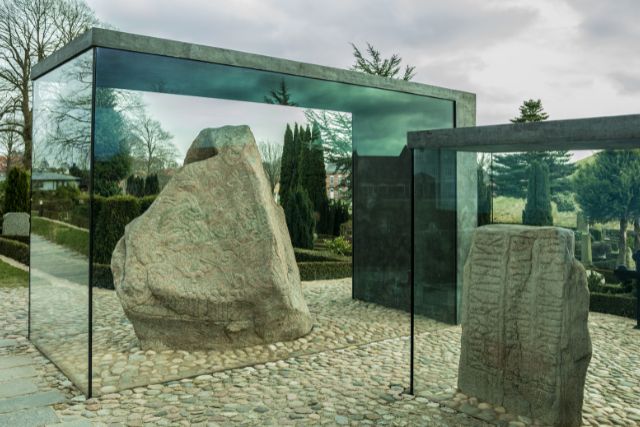

UNESCO World Heritage Site Status
In 1994, the Jelling Stones were designated as a UNESCO World Heritage site.
This recognition highlights their importance as cultural and historical artifacts and helps to protect them for future generations.
Conservation Efforts
Conservation efforts are essential to preserve the Jelling Stones.
These efforts include measures to protect the stones from weathering and erosion, ensuring they remain intact for future study and appreciation.
The Jelling Stones Museum and Visitor Experience
The Jelling Stones Museum offers an interactive experience for visitors. Through modern technology, visitors can explore the history and significance of the stones in an engaging way.
The museum also provides educational resources for those looking to delve deeper into Viking history and culture.
The Legacy of the Jelling Stones
The legacy of the Jelling Stones extends beyond their historical significance. They continue to influence Danish national identity and culture.
Influence on Danish National Identity
The Jelling Stones are a source of national pride for Denmark. They symbolize the country’s unification and Christianization, which are key elements of Danish identity.
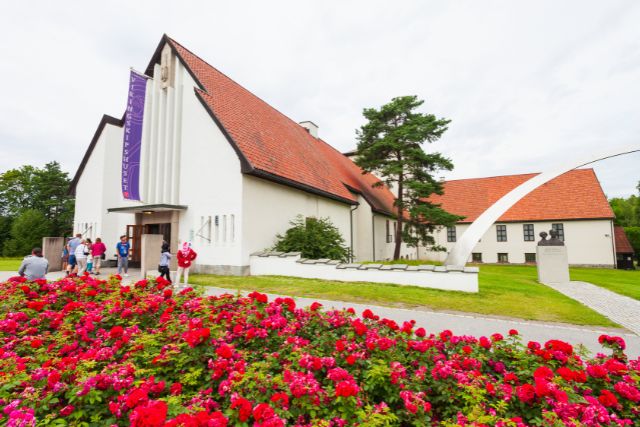

Representation in Modern Culture
The Jelling Stones appear in various forms of modern Danish culture, from literature to art. Their depiction in the Danish passport highlights their ongoing relevance and importance.
Educational and Historical Importance
The stones are invaluable educational tools, providing insights into Viking society, language, and art.
They are studied by historians, archaeologists, and linguists, making significant contributions to our understanding of the Viking Age.
Conclusion
The Jelling Stones are more than just ancient artifacts; they are a window into Denmark’s past.
They commemorate the achievements of King Harald Bluetooth and symbolize the country’s transition from paganism to Christianity.
As we continue to study and preserve these stones, we gain a deeper appreciation for the rich tapestry of Denmark’s history.
The Jelling Stones stand as enduring symbols of a nation’s transformation, providing us with invaluable insights into the past while continuing to inspire future generations.
Summary of Key Points
The Jelling Stones are monumental artifacts that commemorate the achievements of King Harald Bluetooth and symbolize Denmark’s transition from paganism to Christianity.
Located in Jelling, Denmark, these stones are among the earliest records mentioning the name “Denmark.”
The larger stone, in particular, highlights Harald’s success in unifying Denmark and converting the Danes to Christianity.
The stones also offer valuable insights into Viking art and the Old Norse language.
Final Thoughts on the Jelling Stones
The Jelling Stones are more than historical markers; they are a testament to Denmark’s rich cultural heritage and its transformative history.
Their preservation and study continue to provide us with a deeper understanding of Viking society and the early Danish state.
As symbols of national pride and historical significance, the Jelling Stones remain a focal point for both scholars and the public.
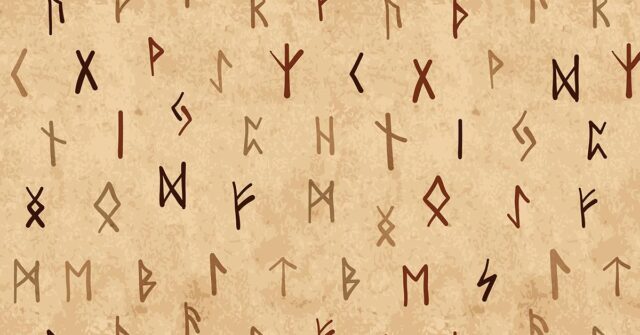

Further Reading and Resources
For those interested in learning more about the Jelling Stones, several resources are available.
The National Museum of Denmark provides detailed information and images of the stones.
Additionally, the Jelling Stones Museum offers an interactive experience that delves into the history and significance of these artifacts.
Academic articles and books on Viking history and archaeology also provide in-depth analyses of the Jelling Stones and their context.

